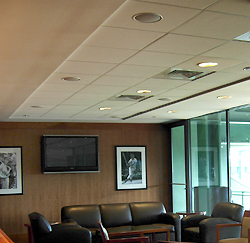
Power Compression. Loudspeakers compress sound at high volumes.
As their voice coil temperatures rise, the impedance of the voice coil goes up, resulting in less draw of audio power from the same voltage drive signal. This is called “power compression.”
We have left power compression out of the formulas because loudspeakers differ in this regard, and because the degree of compression is highly dependent on operational factors such as the peak-to-average ratio of the signal source.
Power compression is also affected by the degree to which the loudspeaker is being run below its maximum capability.
You can generally assume around 2 or 3 dB of compression for quality loudspeakers (such as those with large diameter voice coils) with typical music or speech; and assume as much as 5 or 6 dB of compression with inexpensive speakers (especially those with small diameter voice coils and/or low power ratings), operating with compressed music sources.
Setting SPL Target Goals. While proprietary tools like JBL DSD Distributed System Design software, acoustic design programs (like EASE), and computerized programs from other manufacturers do a good job of predicting how the system will perform in a given room, the system designer must determine what the goal is for each application.
The following is intended to help set an SPL goal for the system design.
For systems requiring paging intelligibility, here are some general guidelines to use as starting points in your system designs. The SPL levels we’re considering here correspond to the maximum average SPL for music and speech (which, you’ll recall, is at least 4 dB lower than the maximum average SPL for pink noise).
Factors to consider include the ambient noise, loudspeaker distance from listeners, loudspeaker overlap, the type of program material and fidelity expectations of the listener.
Determining SPL Above Ambient. Economy background music installations require an average music level capability of at least 5 dB above the ambient noise.
For good paging intelligibility, the system needs to be 10 dB higher than the ambient noise. Levels of 15 to 20 dB above ambient yields excellent intelligibility. (See Table 1.)

